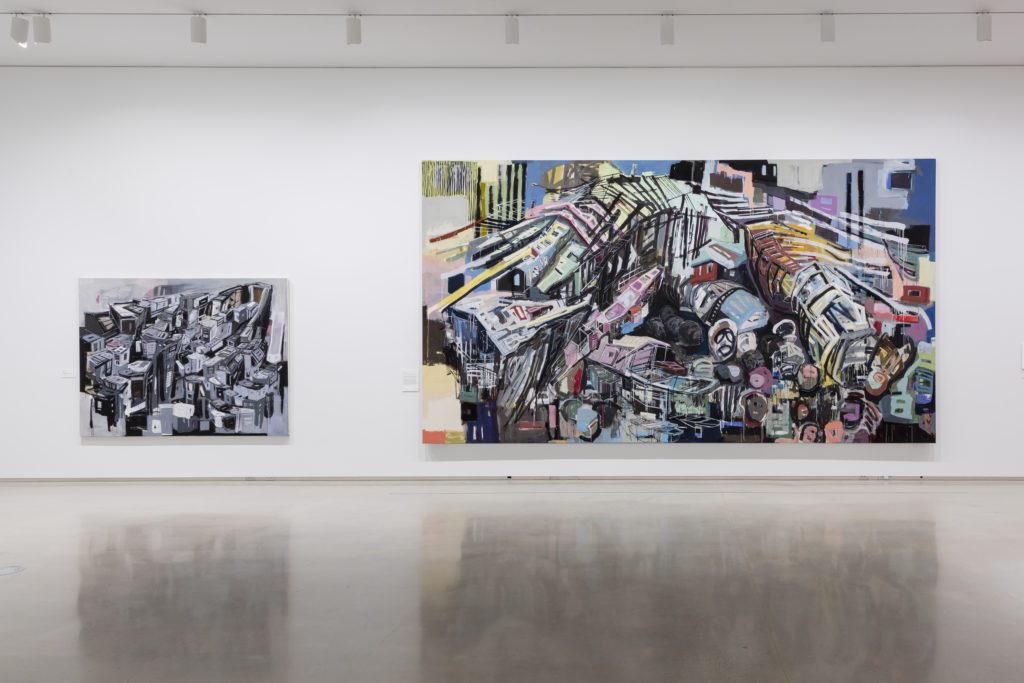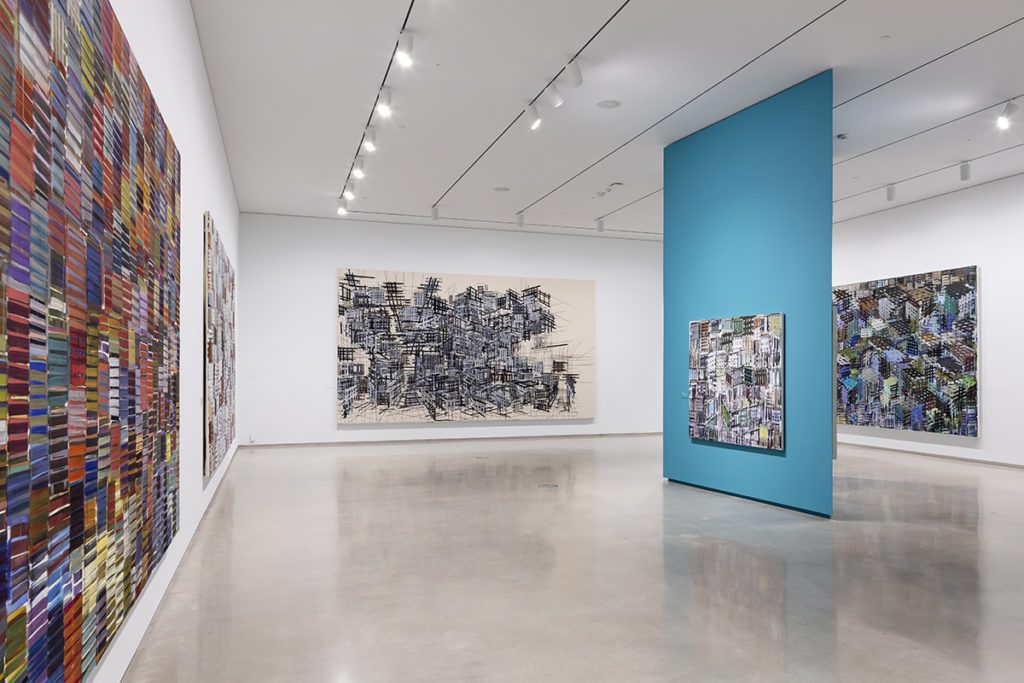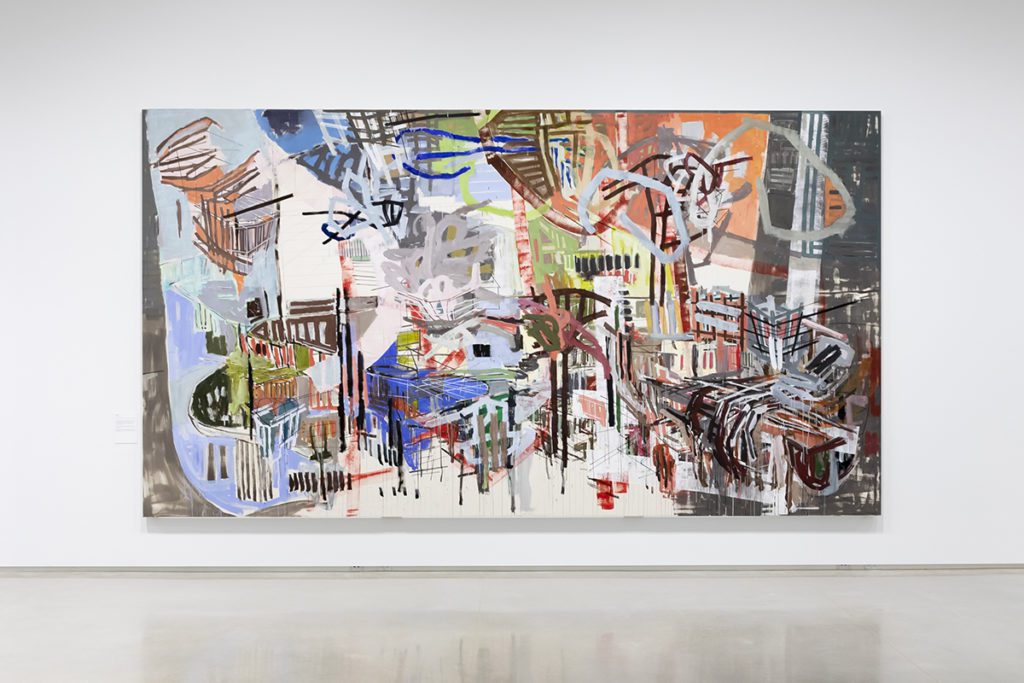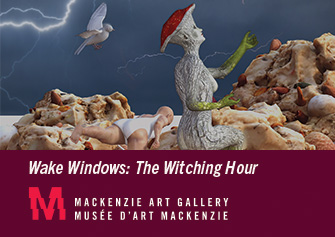Beholden in the Wake: Denyse Thomasos: just beyond at Remai Modern
4 July 2023By Mahlet Cuff

Trauma is what does not go away. It persists in symptoms that live on in the body, in the intrusive fragments of memories that return. It persists in symptoms that live on in communities, in the layers of past violence that constitute present ways of relating. It persists in the symptoms that fuel present wars.
Shelly Rambo, Spirit and Trauma: A Theology of Remaining1
The Denyse Thomasos: just beyond retrospective, exhibited at the Remai Modern in Saskatoon, Saskatchewan from April 15 to September 3, 2023, was curated by Michelle Jacques with the intention of showcasing Thomasos’ art career. The retrospective takes viewers on the expansive journey of Thomasos’ life, a life overlooked by the contemporary art world. Being a Black woman making abstractionist work within a canon that was and still is filled with white men, Thomasos did not receive the flowers she deserved at the time. Still, the artist pushed herself to truly think outside of what the white cube could hold.
Thomasos’ work began with painting subjects such as friends and colleagues at the time of her schooling. Through behind-the-scenes photos from her personal archive, just beyond shows her process and documentation prior to making the work from these early years. The presence of intimate family photographs and self-portraits became fundamental, influencing Thomasos’ later art practice.
Using personal archives as an entry point to understand oneself and one’s relationship to Blackness, as well as how it relates to social and political factors such as racism, can be an isolating and daunting process when trying to extract a sense of selfhood. In conjunction with images of her loved ones, just beyond reveals diary entries from Thomasos’ joyous, sad, anxious, and most vulnerable moments. The thoughts that Thomasos had at the time reflect patterns that many artists go through: questioning themselves, asking if the work will be well received, and wondering whether they themselves even believe in it. The exhibition displays a propensity that dives deep into all the multitudes of who Thomasos was, not only as an artist but as a mother, wife, and human being.
Thomasos’ 1999 painting Sacrifice depicts the skulls of many people piled on top of one another while a horse hangs above them. This dark image, being a very literal representation of histories of anti-Blackness and how it relates to chattel slavery, replicates images of burial grounds. As she continued her self-exploration over time, the bodies in Thomasos’ paintings disappeared. Their being absent gives autonomy without marginalizing the images of those who were most affected.

The literalism in Thomasos’ earlier works influenced their transformation into her more figurative, larger-than-life paintings. Through these later paintings, she is able to create a portal into such issues as the prison-industrial complex, the middle passage and chattel slavery. By way of abstract paintings, Thomasos created translations of these complicated histories. In reference to Dionne Brand’s text A Map to the Door of No Return, she describes the door as “a place, real, imaginary and imagined.”2 Thomasos’ painting has created this door to comprehending histories that are so often denied, erased, and ignored.
Thomasos’ work is able to transcend time because of its significance to the ongoing violence experienced by Black and racialized people. Too often, the trauma of these historically significant events within the Black Diaspora is swept under the rug. When speaking of the Black Diaspora, Brand says that “to live in the Black Diaspora is I think to live as fiction—a creation of empires, and also self-creation. It is to be a being living inside and outside of herself.”3 To live in the fiction that Brand describes is to be aware of colonial violence while seeing these histories simultaneously acknowledged and ignored. Thomasos’ paintings are able to unearth and validate that these events did happen, and that they are continuing to occur. Thomasos is world building in her paintings, generating a world that she wants to see realized—and find solace in.
The 11 by 20 foot painting from 2009 titled Arc, which is the same dimensions as Thomasos’ former East Village studio wall, is filled with dark blues, light pinks, and hues of gray. There is a layering of shapes that act as coffins, cages, bars, and rooftops. Throughout the painting, Thomasos places an image overtop of another one to create a larger structure that holds the weight and trauma of those contained within it. The grandiose painting has the ability to swallow the viewer and capture their attention, to make them sit with the uncomfortable.

The emotions that come from witnessing Thomasos’ paintings can be overwhelming, but they are also necessary. Thomasos built on the repetition of each stroke in her paintings, resulting in a kind of abstraction that feels tangible, as though it could be unraveled. Although there is a somber impression when coming face to face with the pieces, a sense of hope is also present because of the brightness that Thomasos brings to the works. It is a sense of the potential to dream collectively, to dream for better possibilities.
In Thomasos’ work, the need to understand more comes from wanting to be in touch with the truth—and the many truths—that lie within our white supremacist capitalist patriarchal world. Yet there is also love present, in tandem with care. There is care evident in the work she put out into the world, as Thomasos’ practice was more than just an art practice. It was and still is life work. Thomasos’ legacy asks us to consider what it means to dismantle, learn and unlearn the systems that dissipate us.
- Shelly Rambo, Spirit and Trauma: A Theology of Remaining (Louisville: Westminster John Knox Press, 2010), 2.
- Dionne Brand, A Map to the Door of No Return: Notes to Belonging (Toronto: Vintage Canada, 2001), 18.
- Ibid., 19.
Denyse Thomasos: just beyond runs from April 15 – September 3, 2023 at the Remai Modern in Saskatoon, SK.
Feature Image: Installation view of Denyse Thomasos: just beyond, 2023. Photo by Carey Shaw courtesy of Remai Modern.



